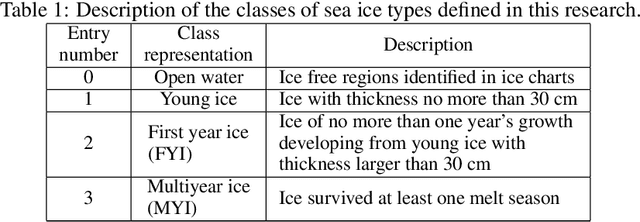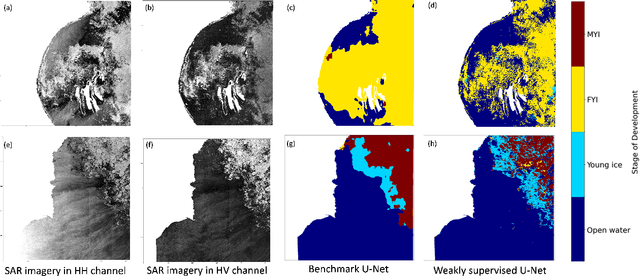K Andrea Scott
Region-level labels in ice charts can produce pixel-level segmentation for Sea Ice types
May 16, 2024



Abstract:Fully supervised deep learning approaches have demonstrated impressive accuracy in sea ice classification, but their dependence on high-resolution labels presents a significant challenge due to the difficulty of obtaining such data. In response, our weakly supervised learning method provides a compelling alternative by utilizing lower-resolution regional labels from expert-annotated ice charts. This approach achieves exceptional pixel-level classification performance by introducing regional loss representations during training to measure the disparity between predicted and ice chart-derived sea ice type distributions. Leveraging the AI4Arctic Sea Ice Challenge Dataset, our method outperforms the fully supervised U-Net benchmark, the top solution of the AutoIce challenge, in both mapping resolution and class-wise accuracy, marking a significant advancement in automated operational sea ice mapping.
 Add to Chrome
Add to Chrome Add to Firefox
Add to Firefox Add to Edge
Add to Edge